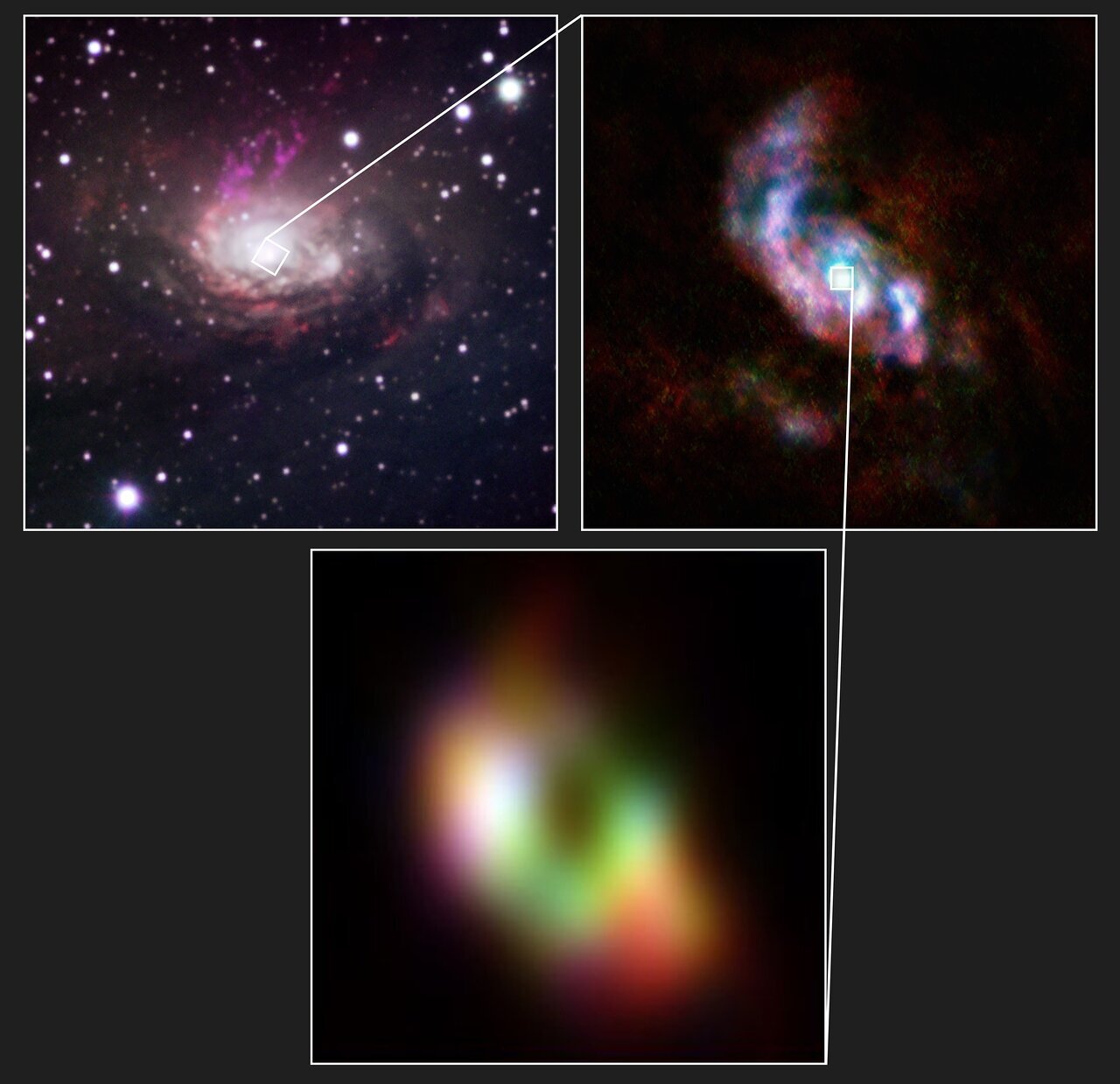Astronomers have discovered that a supermassive black hole at the heart of the Circinus galaxy is feeding through two enormous spiral arms of gas. This rare cosmic phenomenon sheds light on how some of the universe’s hungriest objects gather their meals—and how surprisingly wasteful they can be.
The discovery, led by Wout Goesaert from Leiden University in the Netherlands, used data from the Atacama Large Millimeter/submillimeter Array (ALMA) in Chile. The team’s results, soon to be published in *Astronomy & Astrophysics* and now available on the arXiv preprint server, provide a vivid look at how material flows toward black holes.
Located about 13 million light-years from Earth, the Circinus galaxy sits behind the Milky Way’s disk and was only discovered in 1977. Despite its relative closeness, much of its light is obscured by dust in our own galaxy. Goesaert first studied Circinus in 2023 as a master’s student, analyzing its swirling gases in unprecedented detail.
The ALMA data revealed two distinct spiral arms encircling the galaxy’s central supermassive black hole, acting like cosmic highways that channel gas toward it. “In cartoons, you often see a simple disk of gas swirling straight into a black hole, like water down a drain,” Goesaert explains. “But in reality, that disk can’t feed itself. You need a supply route—and that’s where our spiral arms come in.”
However, the black hole doesn’t manage to consume most of what it’s given. The researchers found that gas streams inward along the arms at speeds of up to 150,000 kilometers per hour, but only about 12 percent of it actually falls into the black hole. The rest is flung back into space before reaching the event horizon—the point of no return.
This finding raises intriguing questions about how black holes grow and how they affect their surroundings. “Supermassive black holes are messy eaters,” says Goesaert’s supervisor, Dr. Violette Impellizzeri from the Netherlands Institute for Radio Astronomy (ASTRON). “Even though we were studying the same data as another group, our deeper modeling showed these two spiral arms for the first time.”
The rejected material might not be wasted. Scientists suspect that the ejected gas could eventually fall back toward the black hole, like water splashing back into a fountain—or it could drift away, triggering new star formation in the galaxy.
The team now hopes to investigate further using next-generation telescopes such as the Event Horizon Telescope (EHT), which captured the first-ever image of a black hole, and the Extremely Large Telescope (ELT), currently under construction in Chile. These powerful observatories may reveal whether all supermassive black holes feed in such spectacular spiral fashion—or whether Circinus is a truly exceptional case of cosmic gluttony.
https://knowridge.com/2025/10/a-greedy-black-hole-eats-through-two-giant-cosmic-spirals/


